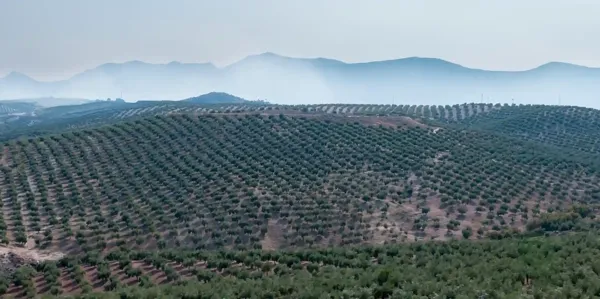Have any questions?
What is the demand for these farms?
Consumers' increased awareness of product origins, with a trend toward quality and sustainability in food, has elevated the status of olive oil and table olives, and consequently, their value.
Olive oil has been part of people's dietary habits for centuries and continues to gain prominence year after year. The growing popularity of the Mediterranean diet, in which olive oil is a cornerstone, its health benefits, and its nutritional properties have boosted its consumption, surpassing butter and sunflower oil. In fact, in recent years, its cultivation has expanded to unconventional areas such as Asia, Latin America, and Oceania.
Table olives have also become a cherished product in gastronomy. Changes in eating habits have driven the search for healthy and versatile alternatives. The versatility of table olives in various recipes, their nutritional qualities, and their flavor make them increasingly in demand.
This increased demand has heightened interest in the sale of olive farms. As a result, the supply of olive farms has grown, leading to more opportunities in the market for buying and selling olive farms.
How much does an olive farm produce per year?
Annually, between 2.8 and 3.2 million tons of olive oil are produced worldwide. Spain is the leading producer, contributing 45% of the total production, followed by Italy, Greece, Tunisia, and Turkey.
Regarding table olives, around 1 million tons are produced globally. Spain also leads in table olive production, accounting for 17% of the global output. It is followed by Egypt, Turkey, Algeria, and Greece.
How much does an olive farm for sale cost?
According to the Ministry of Agriculture, the average price of olive groves for sale in Spain was 22,844 euros per hectare in 2022 (latest available information as of November 2024).
However, there were variations between irrigated olive groves, with an average price of 38,027 euros per hectare, and dryland olive groves, with an average value of 18,905 euros per hectare.
How long does an olive tree live?
The olive tree is a tree with a long lifespan due to its resistance to extreme climatic conditions, such as drought or water stress. As a result, it lives an average of 50 years and can last more than 100 years in some cases.
However, its average lifespan varies depending on the cultivation system, as the distance between trees influences its longevity. Intensive olive groves can last over 40 years, reaching their full production phase in the seventh year. In the case of super-intensive systems, the average lifespan is between 15 and 20 years, but they also become productive earlier, around five years after planting.
What is the planting framework on an olive farm?
The planting frameworks in an olive grove depend on the cultivation system used: traditional, intensive, and super-intensive.
In the traditional system, the frameworks are wide, typically 8x8, 10x10, and 12x12 meters. This results in a planting density of 80 to 120 trees per hectare.
In the intensive system, the planting frameworks are narrower, generally 7x7, 8x4, and 7x5 meters, which translates to a density of 200 to 600 trees per hectare.
The super-intensive or hedge system is characterized by a very narrow planting framework, typically 3.25x1.20, 3.5x1.35, or 4x1.5 meters. Consequently, it achieves an even higher density, ranging from 1,500 to 2,000 trees per hectare.
What varieties of olive trees can be found on olive farms for sale?
The choice between one variety of olive tree or another will influence the quality and characteristics of both the olives and the oil produced from them.
It is estimated that there are over 1,000 varieties, of which 139 are considered fundamental, representing 85% of global production. Therefore, in olive groves, various types of olive trees can be found, including the following:
Picual: The most important variety in Spain, mainly grown in the provinces of Jaén, Córdoba, and Granada (Andalusia). Its main use is for olive oil production, representing about 1/3 of global production. It has a high yield of 20%. In addition to Spain, it is cultivated in New Zealand, Egypt, and California.
Arbequina: A variety originating from Catalonia, constituting 10% of global olive oil production. The oil yield from Arbequina olives ranges between 14% and 17%. Apart from Spain, it is also grown in countries like Argentina.
Hojiblanca: This variety is mainly grown in the provinces of Córdoba and Málaga and is used for both table olives and olive oil production. It has an average yield of between 15% and 18%. It can also be found in other olive-growing regions of the world, particularly in Mediterranean areas.
Gordal: A variety mainly used for table olives, whose cultivation primarily takes place in the province of Seville but has spread to other countries like Italy, the United States, and Chile.
Picholine: Originating from Gard, in southern France, but now grown worldwide. It is used both for table olives and for olive oil production, with a traditional focus on the former. Its yield is medium, around 17%. This variety is also found in other Mediterranean areas, such as Italy and Spain.
































